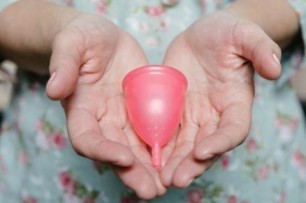Blog Details - Magma HDI

How menstrual cups can transform menstrual hygiene routine 27th June 2022
Menstrual hygiene has been a hot topic amongst people for the last few years. Earlier it was behind closed doors, but today it’s out in the open. Women have come a long way from using leaves to clothes to pads to tampons. With the times changing constantly, people have discovered newer, cheaper and more environment-friendly alternatives. The latest in the market is a menstrual cup.
What is a menstrual cup?
A menstrual cup is an instrument woman can use during her menstrual cycles to avoid leakage and staining. After insertion, this device collects the menstrual fluid inside the vagina. Menstrual cups are typically made of flexible medical-grade silicone or latex.
Why is it a competent alternative to pads and tampons?
● Sanitary pads are made out of plastics that can cause irritation, pad rashes and chaffing. Sometimes, additional chemicals and fragrances are added to these pads, which can cause allergic reactions in women.
● If the pads are worn for long hours, it can cause bacterial infections. Changing the pad every three to four hours can be a cumbersome task for a woman who is always on the go. Limited access to public toilets makes the process all the more challenging.
● Pads tend to dislocate easily from their position, so undertaking active sports or other activities can be challenging as there is always a chance of leakage and staining.
● Tampons are invasive menstrual hygiene devices made out of cotton. This means that the tampons can sometimes leave fibres or other materials inside the body leading to health complications.
● With tampons, there is a great risk of toxic shock syndrome, which can sometimes be fatal.
● Depending on the brand, a tampon or pad can cost between 10 to 15 rupees. A woman spends about four hundred rupees a month on menstrual hygiene. This accounts for around five thousand rupees a year, which is costly.
A menstrual cup is a solution to all the problems mentioned above. The menstrual cup is a reusable device that can last up to 10 years and cost anywhere between two hundred and six hundred rupees. Since it is made of medical-grade material, there is no apprehension regarding its insertion into the human body. A menstrual cup can be worn for about 12 hours and can be reused after a single wash for the same cycle. Since it is made out of silicone, it can absorb any bacteria and not cause an imbalance in the ph balance.
How is it helping the environment?
A significant part of the sanitary napkin is made of plastics that can take up to eight hundred years to decompose. And even after that, they break into microplastics which pollute soil, water and air. Many women burn the menstrual pads after use, releasing highly toxic fumes into the environment. In India, about one lakh tonnes of menstrual waste is produced yearly. Switching the menstrual cups can bring about a considerable change for the environment.
Bringing this change can bring about a significant difference to your menstrual hygiene routine. It is cost-effective, environment friendly and most importantly, the most fuss-free tool. Starting with a menstrual cup can be a little tricky and intimidating, but there are several instructional videos on the internet to make this process easier for you.
Menstrual hygiene should never be compromised and should be taken seriously. Regular visits to your gynaecologist can help you better understand your body and its needs. Before taking a trip to your doctor, do not forget to renew your health insurance. Updating your insurance has become as easy as just a few clicks. You can renew health insurance online and save time and even get additional benefits.
Click HERE to renew health insurance online.
Disclaimer: The information provided above is for illustrative purposes only. To get more details, please refer to policy wordings and prospectus before purchasing a policy.

